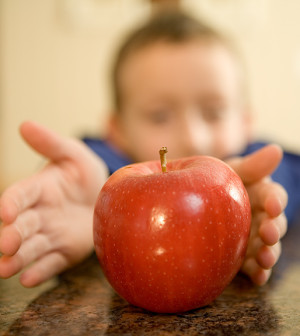- Navigating Your Midlife Crisis: Embracing New Possibilities
- City Raccoons Showing Signs of Domestication
- Mapping the Exposome: Science Broadens Focus to Environmental Disease Triggers
- One Week Less on Social Media Linked to Better Mental Health
- Your Brain Changes in Stages as You Age, Study Finds
- Some Suicide Victims Show No Typical Warning Signs, Study Finds
- ByHeart Formula Faces Lawsuits After Babies Sickened With Botulism
- Switch to Vegan Diet Could Cut Your Greenhouse Gas Emissions in Half
- Regular Bedtime Does Wonders for Blood Pressure
- Dining Alone Could Mean Worse Nutrition for Seniors
‘Green Space’ at School May Help Kids Learn, Study Suggests

Children’s thinking skills may develop faster if they encounter “green space” such as parks and woods in their day-to-day lives, a new study suggests.
Green space at school, in particular, was linked to improved brain development among schoolchildren in Spain.
“Children at schools with more green space around them, such as trees, shrubs and grass, have a better brain development than children at schools with less green space,” said study co-author Mark Nieuwenhuijsen of the Center for Research in Environmental Epidemiology in Barcelona.
“It is important to have green space within and around the school grounds for better brain development,” he added.
It’s possible that something other than green space is affecting the kids’ intellectual prowess, and the apparent link may be purely coincidental.
But one expert not involved with the study said other benefits of fresh air and playgrounds are already known.
“We know that living in neighborhoods with more green space has been associated with improved mental health in adults and kids,” said Kristen Malecki, assistant professor of population health sciences at the University of Wisconsin, Madison. “It also is associated with many positive health behaviors, such as physical activity.”
But proving a direct connection has been difficult. “It’s still unclear why and how these associations exist, and if greenness itself is causing the improved health and mental health,” Malecki said.
In the new study, researchers tracked nearly 2,600 Barcelona schoolchildren, aged 7 to 10, for a year to see how their memory and attention — so-called cognitive skills — developed. The children were tested every three months.
The researchers looked for possible connections between development of thinking skills and green space — defined as any space with vegetation — around their home, their school and on their commute to school.
The investigators found that students with more exposure to green space made greater gains — about 5 to 6 percent in terms of working memory and 1 percent in attentiveness — compared to children surrounded by less green space. Working memory — the ability to sort and retain short-term information — is essential for learning skills such as math and reading.
The link was strongest for green space at schools, possibly because children spend so much of the day there, the researchers suggested.
However, the study had some weaknesses. While Nieuwenhuijsen said the researchers found “little or no evidence” of wealth playing a role in boosting neighborhood greenery and brain power, most of the children came from educated families. More than half of their mothers were college-educated, the researchers said, but they noted this didn’t seem to skew the results. They also said that poorer kids may not have taken part in the research.
It’s also possible that parents with a greater focus on education are drawn to greener neighborhoods. And “it could be that there are other unmeasured factors in schools with more greenness — like better nutrition, curriculum or teacher effectiveness — but they were not measured here,” said Malecki, who was not involved in the study.
If green space does fuel the brain, how might it do so? The researchers don’t know. But they found signs that kids with the fastest-expanding brain power had the least exposure to pollution.
Also, research has suggested that just seeing green space can reduce stress, Nieuwenhuijsen said. And physical activity and peace-and-quiet could play roles, too.
Despite its limitations, “this study adds to the mounting evidence to suggest that green space is beneficial,” Malecki said. “We also know that physical activity is good for child growth and development.”
The findings suggest that the whole family can benefit from spending time together in natural environments, she added. “It may also have the added benefit of increasing brain power,” she said.
In terms of public policy, Malecki said, “evidence suggests that adding trees and ‘greening’ neighborhoods may be a simple solution to improving population health.”
The study is published in the June 15 issue of the Proceedings of the National Academy of Sciences.
More information
The National Wildlife Federation discusses benefits of outdoor play.
Source: HealthDay
Copyright © 2025 HealthDay. All rights reserved.










